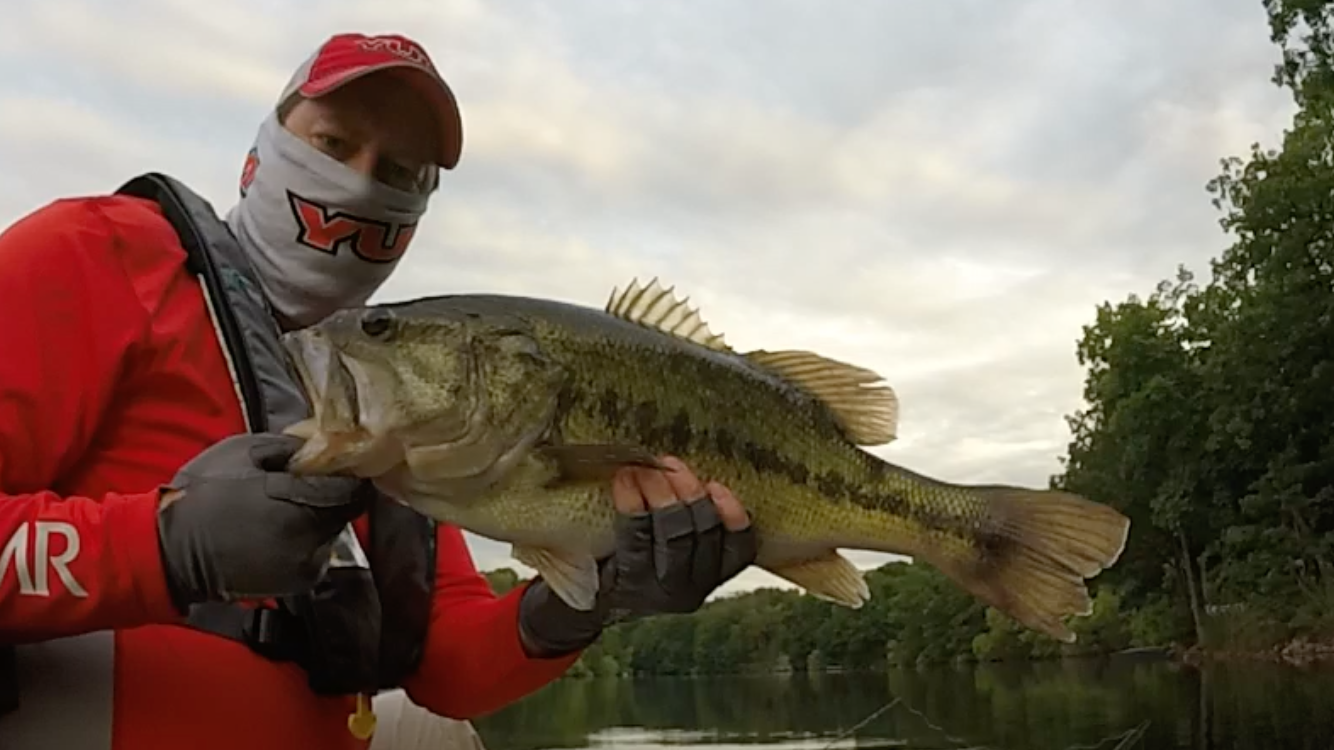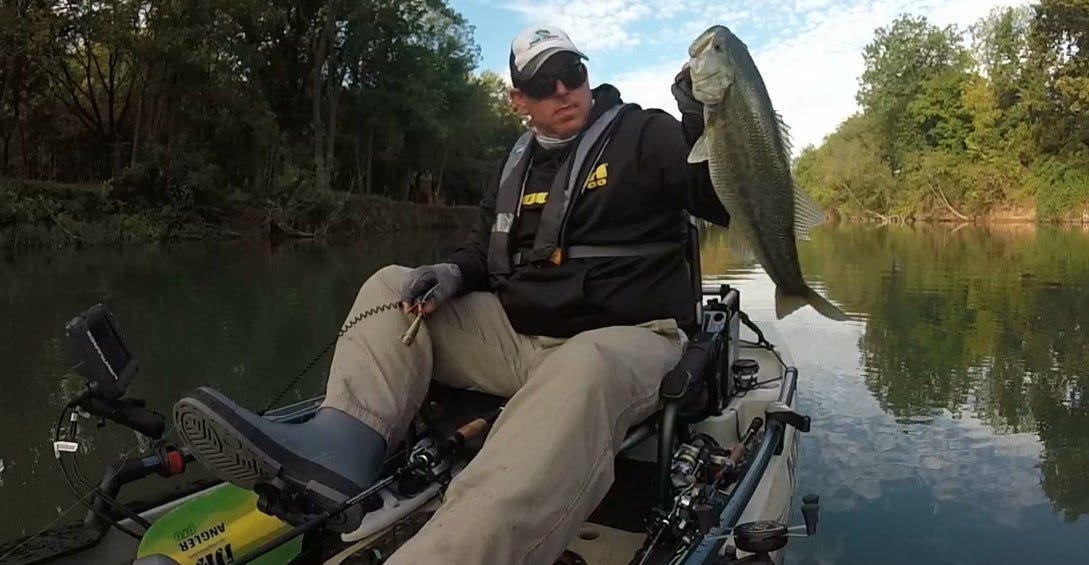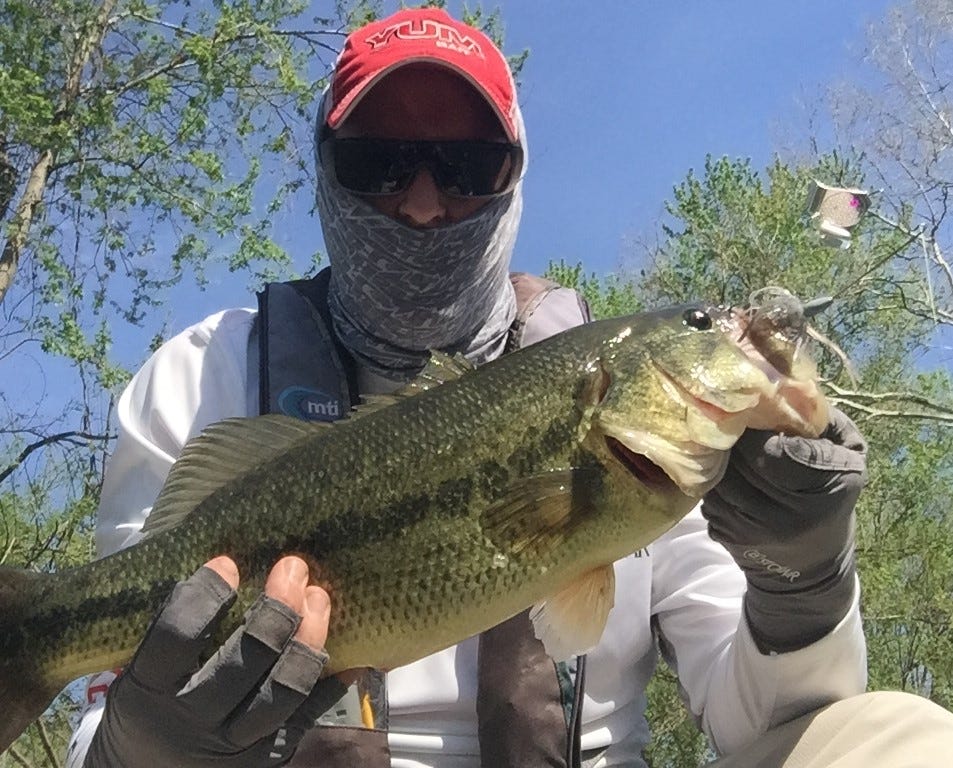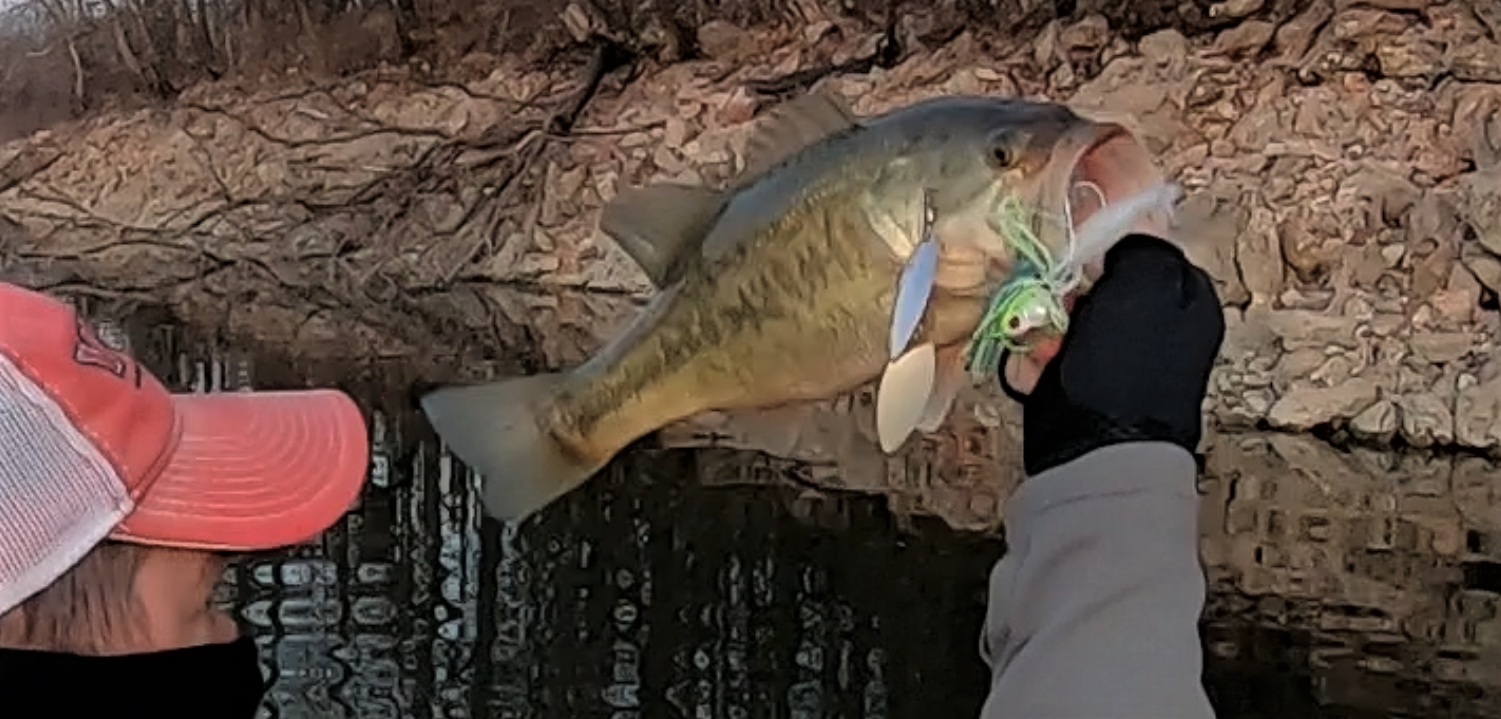- Apr 27, 2023
Spring Power Fishing for Bass from a Kayak
Kayak bass fishing doesn’t necessarily mean finesse. Power fishing bass strategies allow you to take advantage of the fish’s aggressive spring feeding.


Power fishing is a style used by bass anglers to cover large areas quickly in search of active and aggressive fish. It is achieved by using larger, faster-moving lures that often cause vibration or disruption in the water to trigger a predatory response from a feeding bass or reaction strike from a bass that is not feeding. Power fishing is the opposite of finesse fishing, which uses smaller, more subtle lures and slower presentations.
Spring is an excellent time for power fishing, as the water temperature starts to warm, and the bass become more active and aggressive. During spring, bass move from their deeper winter haunts to shallower water in search of food and to spawn. This movement makes them more susceptible to power fishing techniques. The combination of warmer water, more daylight hours, and increased bass activity makes spring the perfect time for power fishing.
Kayak Considerations


One key aspect of power fishing is to cover water and make many casts at targets or stretches of shoreline that hold bass. By doing so, your chances to run across a bass that will react to your bait increase. It’s a numbers game.
Kayaks with pedals or electric motors make it easier to cover water. This is harder to do with a paddle kayak, but I have seen some anglers be effective. The key is to bypass stretches of shoreline that lack the right kind of targets, cover or wind to maximize the effectiveness of the power fishing baits. If the wind is blowing you off points, try positioning nearer to the shore and cast out to work the point.
Fishing while on the move in a kayak can make a solid hookset more challenging, especially if your kayak is moving forward and you are trying to hook a fish out in front of your bow. For me, it is easier to get a good hookset if I’m fishing 45 degrees off one side.
Pitching and flipping can be challenging from some kayaks. If you can, standing up when flipping is ideal for leverage, but this can be difficult unless you are in a larger yak. For crankbaits and other topwaters with treble hooks, a sweeping hookset works best, and like in a bigger boat it’s best to try to keep the rod tip low and prevent the bass from jumping out of the water and spitting the lure.
One great advantage of fishing out of a kayak is that you gain more angles to throw at cover by getting tighter to banks and behind cover. When power fishing, think about approaching the cover from an odd angle or from behind it. This will give the bass a different look than they see all day from boating anglers throwing toward the bank from deeper water.
Power Fishing Lures & Presentations


Power fishing lures generally are baits that are kept moving or that have sudden movements that trigger a strike. Specific baits deemed power fishing lures differ from angler to angler, but there are a few I want to highlight as some of my favorites to use during spring from my kayak.
Crankbaits - Crankbaits provide a great starting place. The erratic movement and diving action of a crankbait can imitate baitfish or crawfish. Bouncing a crankbait off wood or digging into a rocky bank can create that reaction bite. Either a squarebill or a mid-depth diver can be effective, depending on the area and cover. A couple of my favorite crankbaits in early spring are the Norman Speed N and the Bomber Deep Flat A. Crankbaits are most effective when used to cover large areas, as they can be retrieved quickly.
Spinnerbaits – When the water starts to warm and the wind starts to blow, it is spinnerbait time. These are great to fish from a kayak because they are easy to cast and retrieve, and you can make the most of covering water because they are so versatile. You can retrieve them fast, change speeds, rub them against brush or bang them against a tree or a stump. They can be thrown just about anywhere. The vibration and flash of the blades can entice a bite. There are too many great spinnerbaits to choose from, but two I always have in my kayak this time of year are the BOOYAH Covert tandem blade and a War Eagle double willow blade. Don’t overlook the use of a smaller finesse spinnerbait like the new BOOYAH Covert Finesse on a tough post-front spring day.
Topwater Baits – I can barely wait until the water is warm enough in spring to break out some topwater baits. Once the water hits 58-60 degrees it is time to start throwing a buzzbait, and you might catch a giant bass with one. Something about a buzzbait squeaking over the head of bass during the spawn makes them lose their minds and evokes some vicious strikes. The War Eagle Buzzbait and Buzz Toad are my two primary choices. I’ll start days with both to see which the fish like better that day.
As the water gets in the mid-to-high sixties, it’s time to walk the dog with a Heddon Zara Spook. I like a good Pop-R, but a Spook lets you cover water faster and is just fun to fish. It takes some practice to learn to walk the dog from a kayak, but it can be done and is so much fun!
Casting or Flipping Jigs – A jig may not come to mind as a power fishing bait, since you can’t cover as much water as quickly as other baits. However, jigs can be very good at generating a reaction strike as you flip them at wood, into bushes, and around docks or chunk rock on spawning banks. You can still cover water but must keep moving from one bit of cover to the next in search of the most likely targets to hold a bass. If you can find a pattern, move quickly and only stop to flip the kind of cover fish are using that day. A quick drop of the jig in the right spot can prompt a reaction bite. Give the War Eagle JIU-JIGSU flipping jig a try.
Swim Jigs - A swim jig is a favorite of mine and provides a great alternative to a spinnerbait around the same type of cover when bass are timid or on a calm day. Because you cast and retrieve like a spinnerbait or a crankbait, swim jigs can be an effective for covering water. Swim jigs also can target all levels of the water column with one bait, providing flexibility. My primary swim jig is a BOOYAH Mobster 5/16 oz with a paddle tail or craw trailer.
In conclusion, power bass fishing is all about using the right baits and techniques to catch fish by triggering a reaction bite. The lures above aren’t the only power fishing baits for spring, but they are my favorite ones and have put the most bass in my kayak.





